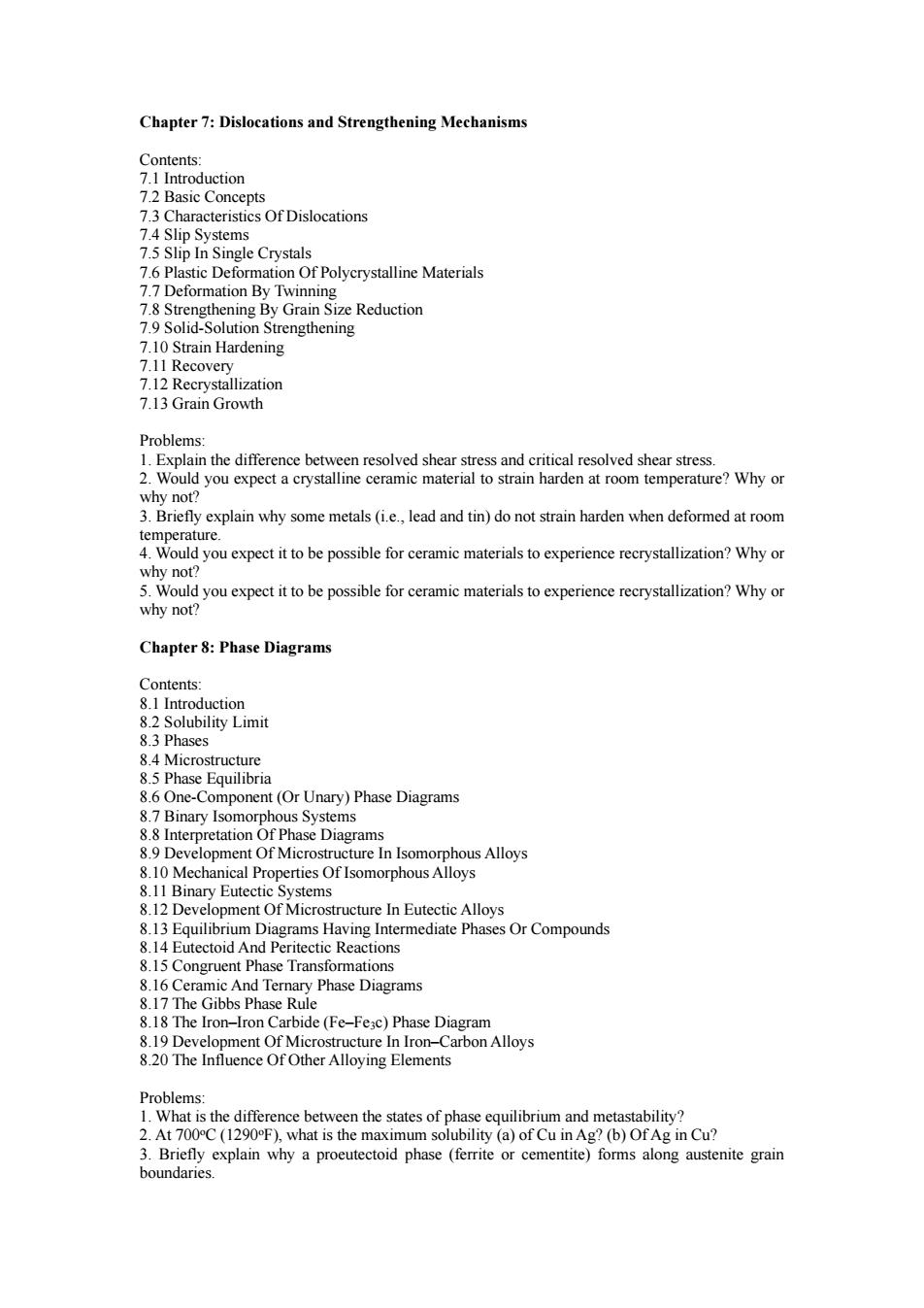正在加载图片...

Chapter7:Dislocations and Strengthening Mechanisms 7.3 as 7.4 Slip Systems iofDisloecaioms Slip In ingle Crystals fPolycrystalline Materials Strengthening By GrainSiz e Reduction 7.11 Recover 7.13 Grain Problems the di 2 Would you ex pect a crystalline ceramic material to strain harden at room temperature?Why or why no xplain why some metals(and tin)do not strain harden when deformed at room tem epeeme merey why not? Chapter8:Phase Diagrams 82Solubility Limit hases Phase Equilibria On-Component (Or Unary)Phase Diagrams ams 8.9 Development Of Microstructure In Isomor es o 8.12 Development Of Microstructure In Eutectic Alloys 1 Equilib Having Intermediate Phases Or Compounds 8.15 Congruent Phase Transformations yPhase Diagrams 8.18 The Iron-Iron Carbide(Fe-Fee)Phase Diagram Problems: in Cu? 3.Briefly explain why a proeutectoid phase (ferite or cementite)forms along austenite grain boundariesChapter 7: Dislocations and Strengthening Mechanisms Contents: 7.1 Introduction 7.2 Basic Concepts 7.3 Characteristics Of Dislocations 7.4 Slip Systems 7.5 Slip In Single Crystals 7.6 Plastic Deformation Of Polycrystalline Materials 7.7 Deformation By Twinning 7.8 Strengthening By Grain Size Reduction 7.9 Solid-Solution Strengthening 7.10 Strain Hardening 7.11 Recovery 7.12 Recrystallization 7.13 Grain Growth Problems: 1. Explain the difference between resolved shear stress and critical resolved shear stress. 2. Would you expect a crystalline ceramic material to strain harden at room temperature? Why or why not? 3. Briefly explain why some metals (i.e., lead and tin) do not strain harden when deformed at room temperature. 4. Would you expect it to be possible for ceramic materials to experience recrystallization? Why or why not? 5. Would you expect it to be possible for ceramic materials to experience recrystallization? Why or why not? Chapter 8: Phase Diagrams Contents: 8.1 Introduction 8.2 Solubility Limit 8.3 Phases 8.4 Microstructure 8.5 Phase Equilibria 8.6 One-Component (Or Unary) Phase Diagrams 8.7 Binary Isomorphous Systems 8.8 Interpretation Of Phase Diagrams 8.9 Development Of Microstructure In Isomorphous Alloys 8.10 Mechanical Properties Of Isomorphous Alloys 8.11 Binary Eutectic Systems 8.12 Development Of Microstructure In Eutectic Alloys 8.13 Equilibrium Diagrams Having Intermediate Phases Or Compounds 8.14 Eutectoid And Peritectic Reactions 8.15 Congruent Phase Transformations 8.16 Ceramic And Ternary Phase Diagrams 8.17 The Gibbs Phase Rule 8.18 The Iron–Iron Carbide (Fe–Fe3c) Phase Diagram 8.19 Development Of Microstructure In Iron–Carbon Alloys 8.20 The Influence Of Other Alloying Elements Problems: 1. What is the difference between the states of phase equilibrium and metastability? 2. At 700oC (1290oF), what is the maximum solubility (a) of Cu in Ag? (b) Of Ag in Cu? 3. Briefly explain why a proeutectoid phase (ferrite or cementite) forms along austenite grain boundaries